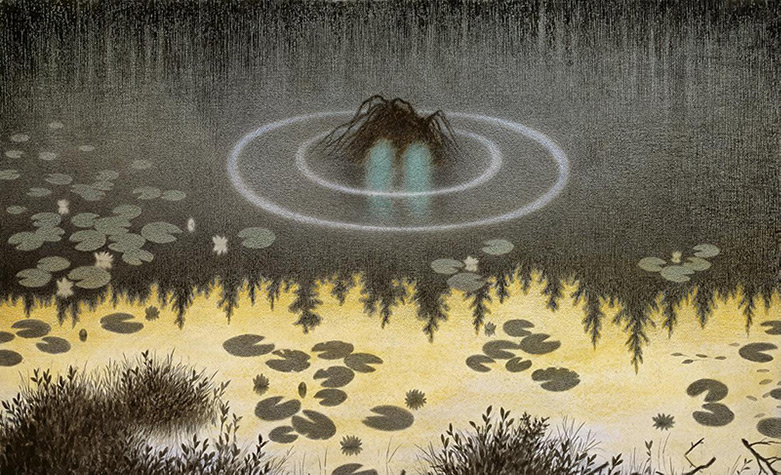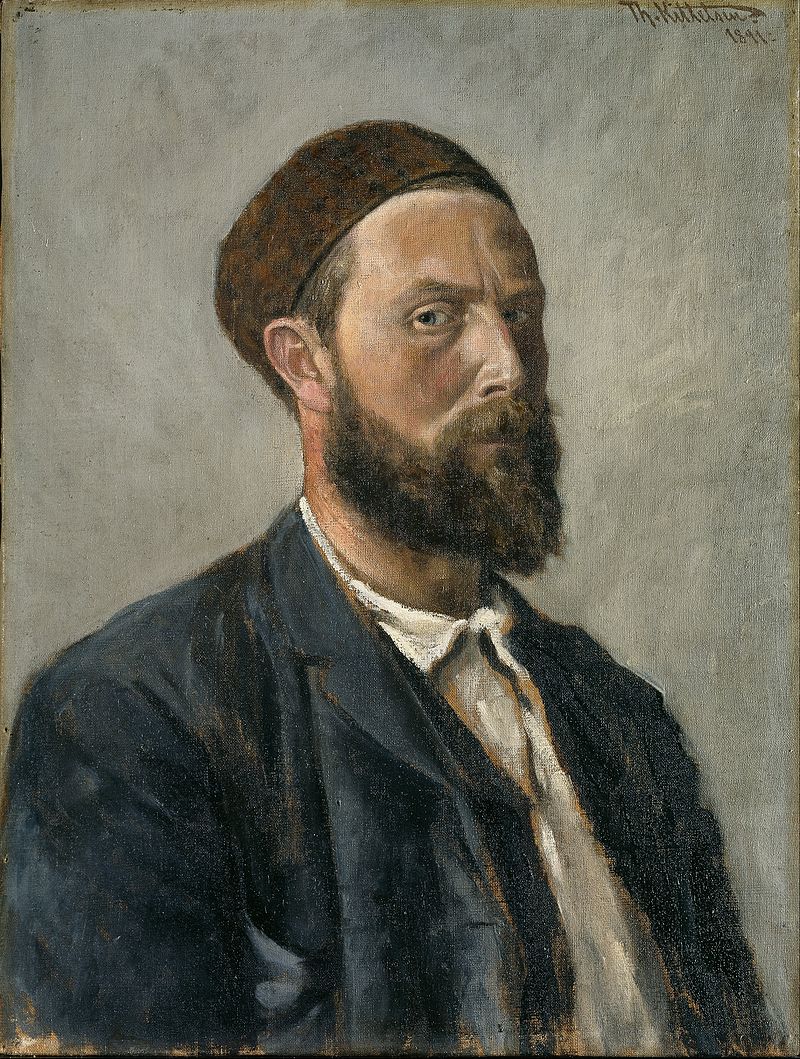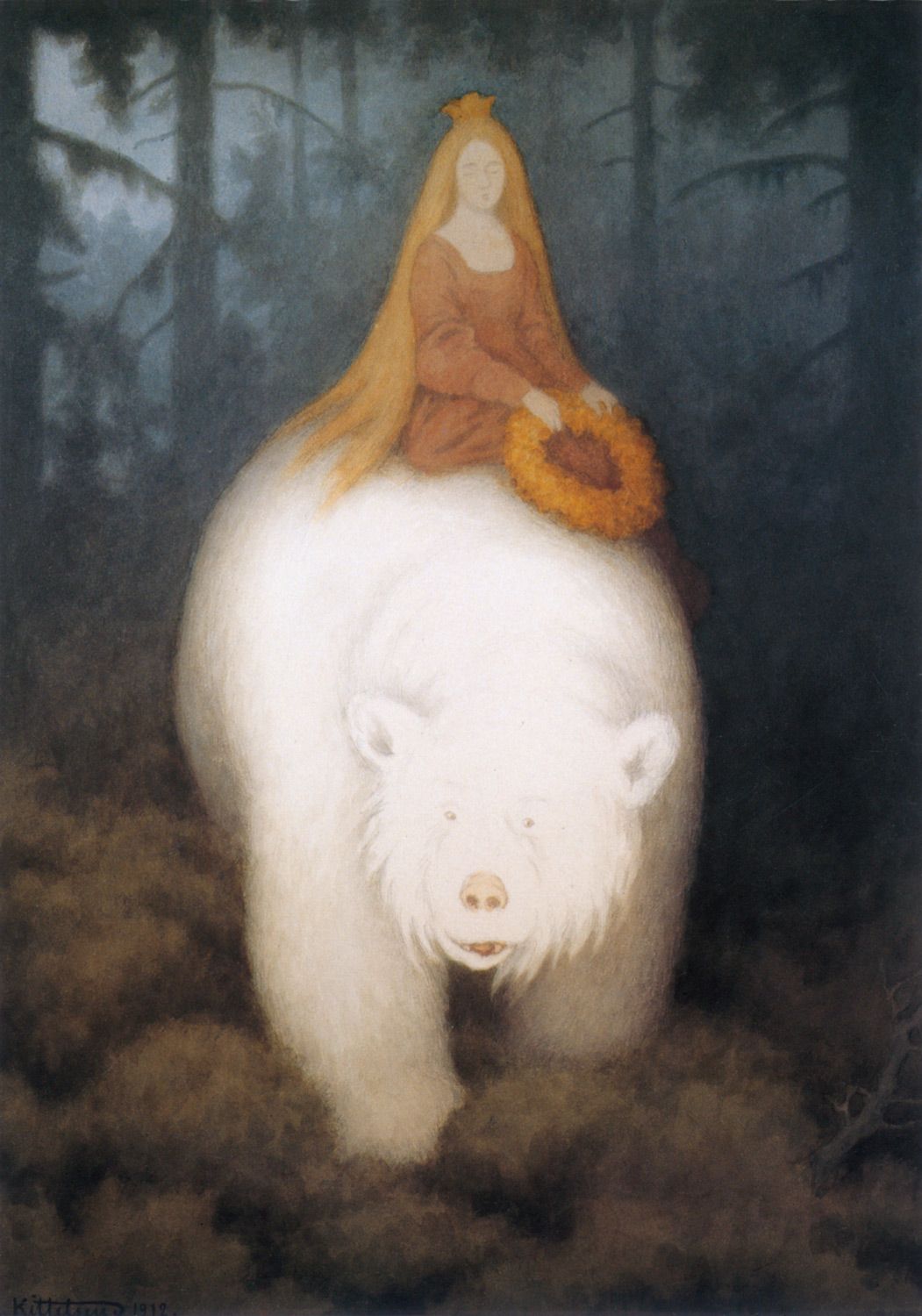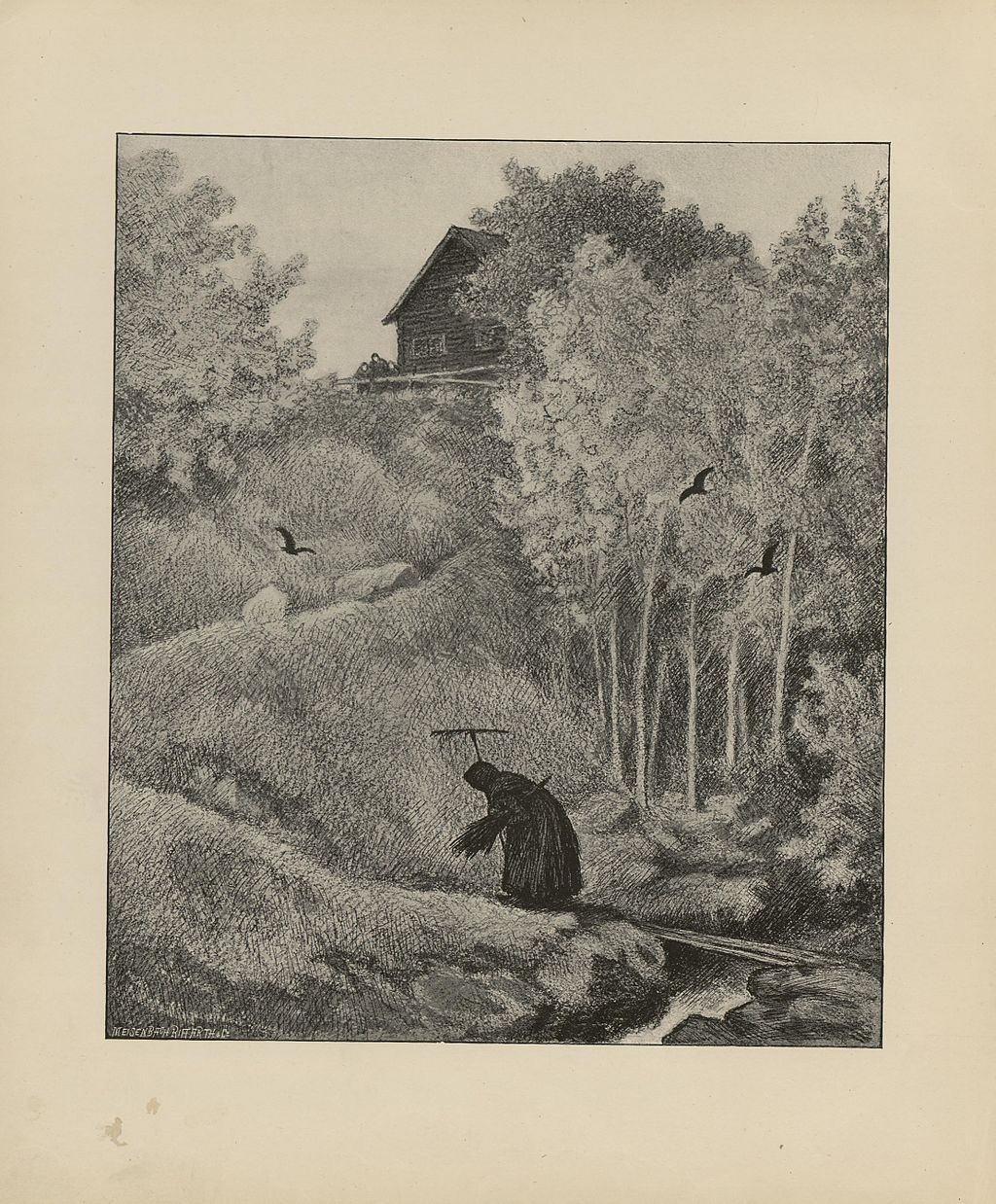
Meet the artist who gave a face to many Norwegian fairytale and folklore characters!
Imagine you're talking to someone who's not from Norway. If you ask them to name a famous Norwegian artist, they will no doubt answer “Edvard Munch“. If you ask them to name a famous Norwegian fairytale teller, they will most likely answer “Peter Christen Asbjørnsen” and/or “Jørgen Moe“.
However, if you ask them to name both a Norwegian artist and fairytale teller, they will in all likelihood be stumped.
Enter Theodor Severen Kittelsen: the Norwegian fairytale artist.

The Watchmaker's Apprentice
Theodor Kittelsen's story starts in Telemark, in the town of Kragerø, on 27 April 1857. In many ways, Telemark is a fairytale county, and as with the beginning of most fairytales, Kittelsen's early life was not particularly easy.
Things took a turn for the worst when his father, Johannes Kittelsen, died in 1868, leaving his wife and eight children alone with no financial support. If this had been a fairytale, this would be the point where a fairy godmother appeared or one of the children found some magic beans.
Sadly, neither of those things happened for the Kittelsen family. Instead, eleven-year-old Theodor started work as an apprentice to a local watchmaker in order to help support his family.
Read more: Creatures in Norse Mythology
In 1870, Kittelsen moved to Oslo (then known as “Kristiania”) to study art. However, his money soon ran out and he had no choice but to leave Oslo and move to Arendal to continue his watchmaking apprenticeship.
Fortunately, Kittelsen”s dreams of becoming an artist were only delayed, not crushed. In 1874, he received financial aid from a man named Diedrich Maria Aall that allowed him to successfully move back to Oslo to continue his art education. In 1876, he moved to Germany to study at the renowned “Akademie der Bildenden Künste München” (Academy of Fine Arts, Munich).

By the time he returned to Norway in 1880, Kittelsen was no longer a watchmaker's apprentice who loved art, but a budding artist in his own right.
Making the Natural Unnatural
Kittelsen's career as a fairytale artist started in 1881 when he was invited to illustrate Asbjørnsen's book “Eventyr bog for børn” (Fairy Tales from the Far North), along with fellow Norwegian artist Erik Werenskiold.
While Kittelsen went on to illustrate a variety of books, he continued to draw for Asbjørnsen and Moe for 29 years, lending his pen to famous stories such as “Østenfor sol og vestenfor måne” (East of Sun, West of Moon).
In addition to illustrating books, Kittelsen published a number of his own books. His most famous work, Svartedauden (The Black Death), consists of poems and illustrations inspired by Pesta, the Norwegian folkloric personification of the plague. Pesta took the form of an old woman who travelled from town to town with a rake in one hand and a broom in the other.
If you saw her using the rake, it was a sign that some people in your village would survive the plague. If you saw her with her broom, it was a sign that no one would. While a lot of Kittelsen's fairytale art is fantastical and other worldly, his depictions of Pesta are truly spine-tingling and capture the gradual yet ominous progression of a plague that wiped out a third of the world's population.

In an article for the Huffington Post, Sara Maitland describes the relationship between nature and fairytales as “symbiotic”: “Nature informs the stories and the stories inform what we see in nature”. Kittelsen seems to have understood this well, as his independent art often unites Norwegian folklore with the Norwegian landscape.
As the Store Norsk Leksikon's entry on Kittelsen puts it: “Kittelsen fortrollet naturen” (Kittelsen made the natural unnatural). For example, Tårntjernet lake in Telemark provided the setting and inspiration for Kittelsen's depictions of Nøkken, which is a Norwegian water spirit that lures unsuspecting travellers to a watery grave.
Read more: A Fairytale Traveller's Guide to Norway
The Man Behind the Brush
Kittelsen died aged 61 on 21 January 1917, leaving a widow and nine children. While his life was far from a fairytale, it was arguably dedicated to fairytales and his beautiful artwork has continued to live on after his death. If you want to experience his original work for yourself, or learn more about the man behind the brush, there are several places in Norway you can visit:
The House of Theodor Kittelsen (Kragerø, Telemark)
Tucked away among the narrow, cobble-stone streets of Kragerø is a wooden, yellow house with white windows and a white picket fence. This is the house that Kittelsen was born in (on the second floor, to be exact) and where he spent his childhood. The house is now a living museum that is open to visitors in the summer, and frequently hosts exhibitions relating to Kittelsen and his art.
Read more: This Is Telemark, Norway
Lauvlia & the National Centre for Theodor Kittelsen (Sigdal, Viken)
The Kittelsen family moved to Lauvlia in 1899, and the house still bears signs of the family's presence more than a hundred years later. The house is open to tours in the summer, which is also the perfect time to take in the beautiful scenery of the Soneren lake and the surrounding mountains.
In addition, a National Centre for Theodor Kittelsen has been planned for the site. The project is intended to be a “research and learning centre of great national value, commemorating Kittelsen's work and life” and is being overseen by Snøhetta, which is the architectural group responsible for the design of the Oslo Opera House.
The Kittelsen Museum (Blaafarveværket, Buskerud)
Located right next to the Cobalt Mines, the Kittelsen Museum opened on 21 May 1993. The idea to open a museum here came from two of Kittelsen's children, Nanna and Helge Theodor, who also donated a lot of family artefacts to be displayed. Since then, the museum has made of a point of regularly buying Kittelsen's art to add to their exhibition, and now owns a number of his original works.
The museum is currently closed due to the construction of a new entrance hall; it is due to open again on 22 May 2021.
The National Museum (Oslo)
The National Museum of Oslo has a vast collection of Kittelsen's artwork, as well as work from other Norwegian fairytale artists, such as Erik Werenskiold. The museum is currently being moved to a new site, which is due to open in 2021. However, until then, you can view all of its artwork on its website.
What's your favourite artwork from Kittelsen? Do you know of another Norwegian artist who you think deserves more attention? Let us know in the comments!

